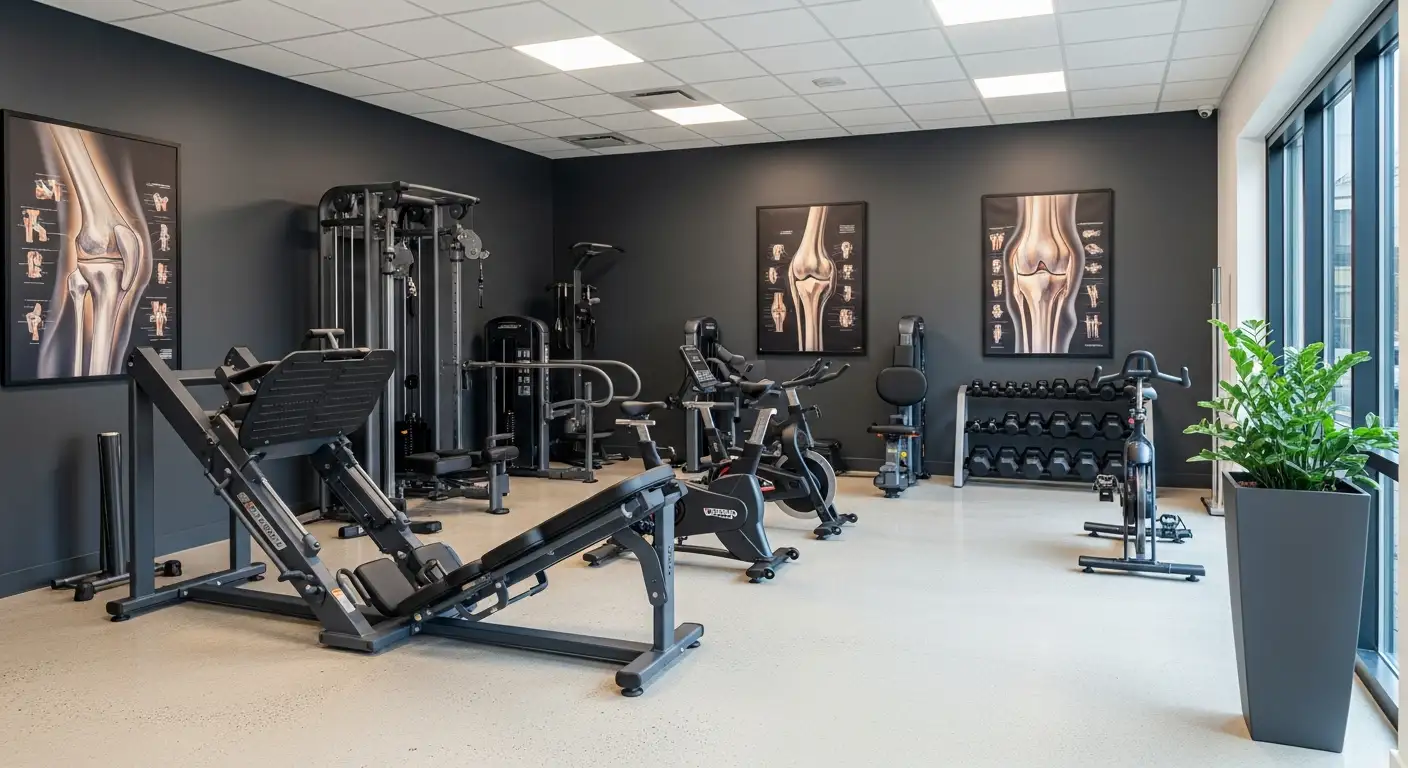Understanding Knee Pain
Knee pain, particularly when kneeling, is a common complaint among people of all ages. It can be caused by a variety of factors, from acute injuries to chronic conditions. Understanding the root cause of knee pain is crucial in seeking the appropriate treatment and preventative strategies.
Common Causes of Knee Pain
There are several potential causes of knee pain when kneeling, many of which can be traced back to the structure and function of the knee joint itself. Some of the most common causes of knee pain include osteoarthritis, tendinitis, bursitis, meniscus tear, and knee cap dislocation.

Another common cause of knee pain when kneeling is patellar tendinitis, often referred to as "jumper's knee". This condition, characterized by inflammation of the tendons connecting the patella (kneecap) to the shinbone, is prevalent in athletes who jump frequently, such as basketball and volleyball players [2].
Osteoarthritis, a common cause of knee pain, is often exacerbated by excess weight due to the increased stress that wears down the cartilage at the ends of bones quickly.
A torn meniscus, often referred to as a torn cartilage in the knee, can also lead to knee pain when kneeling. This type of injury commonly results from twisting or turning quickly, such as during sports or other physical activities [4].
Symptoms of Knee Pain
The symptoms associated with knee pain can vary widely depending on the underlying cause. Pain may be sharp, dull, burning, or throbbing, and can be accompanied by swelling and stiffness.
While these symptoms can often be managed with self-care measures and over-the-counter medications, it's essential to seek medical attention if the pain persists or is accompanied by significant swelling, redness, or fever. These could be signs of a more serious condition that requires medical intervention.
Understanding the causes and symptoms of knee pain when kneeling is the first step to effective treatment. By taking a proactive approach to knee health, individuals can work toward reducing pain and preventing further injury.
In-Depth Look at Knee Conditions
Understanding the causes of knee pain when kneeling often requires an in-depth look at various knee conditions. Three common conditions that can contribute to knee pain when kneeling include osteoarthritis, tendinitis, and bursitis.
Osteoarthritis and Knee Pain
Osteoarthritis is a common form of arthritis that often affects the knee. This condition results from wear and tear of the cartilage, the cushiony material that prevents the bones from rubbing against each other. When osteoarthritis affects the kneecap and the cartilage behind it, it might result in pain when kneeling [5].
Symptoms of osteoarthritis in the knee can include:
- Pain that increases when active, but gets a bit better with rest
- Swelling and warmth in the knee
- Stiffness in the knee, especially in the morning or when sitting for a long time
If you experience sudden sharp pain in the knee when kneeling, it could be due to osteoarthritis. Seek medical attention to confirm the diagnosis and start the right treatment plan.
Role of Tendinitis in Knee Pain
Tendinitis, also known as tendonitis, refers to inflammation or irritation of a tendon, the thick fibrous cords that attach muscle to bone. When tendons or ligaments in the knee become irritated or inflamed, it can lead to conditions like tendinitis, causing pain when kneeling.
One specific type of tendinitis that can cause knee pain when kneeling is patellar tendinitis, also known as jumper's knee. This condition affects the tendon connecting the kneecap to the shinbone [4].
Symptoms of patellar tendinitis include:
- Pain in the lower part of the kneecap
- Swelling around the knee
- Difficulty in performing activities that require knee bending
Bursitis and Knee Pain
Bursitis is a condition that involves the inflammation of the bursae, small fluid-filled sacs that cushion the bones, tendons, and muscles near joints. Bursitis of the knee can result in knee pain when kneeling.
Symptoms of knee bursitis can include:
- Swelling on the front of the kneecap
- Redness and warmth over the affected area
- Difficulty moving the knee
If you are experiencing knee pain when kneeling, it is essential to identify the underlying cause, whether it's osteoarthritis, tendinitis, or bursitis. A healthcare provider can provide a definitive diagnosis and recommend appropriate treatment options to alleviate pain and improve knee function.
Injuries Leading to Knee Pain
When considering the causes of knee pain when kneeling, certain injuries to the knee can play a significant role. These injuries often involve the meniscus or the ligaments of the knee, leading to discomfort while kneeling.
Meniscus Tear and Knee Pain
One severe but less common cause of knee pain when kneeling is a meniscus tear. The meniscus is a robust and rubbery cartilage that acts as a shock absorber in the knee joint. A tear in the meniscus can cause pain, swelling, and stiffness, particularly when kneeling or twisting the knee.
A meniscus tear is usually caused by a sudden twist or quick turn of the knee, often while the foot is planted and the knee is bent. This injury is common in athletes but can happen to anyone. Symptoms may include a popping sensation, swelling or stiffness, pain (especially when twisting or rotating the knee), difficulty straightening the knee fully, or feeling as though the knee is locked in place.
Ligament Injuries and Knee Pain
Injuries to the ligaments in the knee can also result in knee pain, especially when kneeling. These injuries are often the result of sports-related trauma or accidents that cause the ligaments to stretch or tear. Specifically, injuries to the anterior cruciate ligament (ACL) or the posterior cruciate ligament (PCL) can lead to discomfort when kneeling.
Ligament injuries can cause severe pain, a loud pop or snap during the injury, swelling within 24 hours, loss of range of motion, tenderness along the joint line, discomfort while walking, or the feeling of instability in the knee. Treatment typically involves rest, ice, compression, and elevation (RICE). In severe cases, surgery may be required.
These injuries underscore the importance of using protective equipment during sports and exercising caution during physical activities. Proper training and conditioning can also help prevent these injuries. For those experiencing knee pain when kneeling, seeking a professional medical evaluation is essential to diagnose and treat the underlying cause effectively.
Role of Body Weight in Knee Pain
While discussing the causes of knee pain when kneeling, it is essential to consider the impact of body weight on our knee joints. The increased force exerted on the knee joints due to excess weight can lead to various complications, including knee pain when kneeling.
Obesity and Stress on Knee Joints
Obesity is a significant factor that contributes to knee pain. Excess weight stresses the weight-bearing joints in your hips, knees, and spine, leading to accelerated wear and tear on the joints and causing debilitating knee pain that can limit mobility. The load on knee joints is four times a person's body weight, such that if someone weighs 150 pounds, their knees bear 600 pounds of force when standing or walking. This pressure on the knees can increase with activities like walking up steps, climbing inclines, or squatting.
Overweight and obese individuals have an increased risk of developing arthritis, with two out of three overweight or obese Americans being diagnosed with arthritis, compared to one out of five among all Americans. Osteoarthritis, a common cause of knee pain, is exacerbated by excess weight due to the increased stress that wears down the cartilage at the ends of bones quickly. Additionally, fat cells release inflammatory chemicals that can contribute to the development of osteoarthritis.
Excessive body weight can also lead to muscle weakness and imbalance, affecting the stability and alignment of the knee joint, further increasing the risk of knee pain while kneeling.
Weight Loss and Reduction in Knee Pain
Weight loss can significantly impact the reduction of knee pain. For instance, losing even 10 pounds can significantly reduce the load on the knees, with every 10 pounds of weight loss resulting in a 40-pound reduction in pressure on the knees.
Importantly, weight loss can also reduce the risk of developing osteoarthritis and other knee-related conditions, thereby decreasing the likelihood of experiencing knee pain when kneeling. In fact, weight loss has been linked to reduced pain and improved function in individuals with knee osteoarthritis, suggesting that it can be an effective non-surgical treatment for managing knee pain.
It is evident from these findings that maintaining a healthy weight can significantly reduce the risk of experiencing knee pain when kneeling, highlighting the importance of weight management in maintaining knee health.
Addressing Knee Pain
While knee pain when kneeling can be uncomfortable and limiting, understanding the causes and taking appropriate measures can significantly reduce the discomfort. These measures include seeking medical evaluation and incorporating preventative measures and exercises into daily routines.
Importance of Medical Evaluation
If an individual experiences persistent knee pain when kneeling, it is crucial to seek medical evaluation. The underlying causes can vary widely—from overuse injuries like tendinitis to more serious conditions like arthritis or meniscus tears. A proper diagnosis is essential for developing an appropriate treatment plan and preventing further damage to the knee joint.
In cases where knee pain persists despite stretching and exercises, it is advisable to seek medical assistance. Sudden or sharp knee pain without strenuous activity, mobility issues, clicking or popping in the knee, knee buckling, or persistent pain unrelieved by conservative methods should prompt a medical evaluation.
Preventative Measures and Exercise
Along with medical evaluation and treatment, preventative measures and regular exercise play a significant role in managing knee pain. Excessive body weight can lead to increased wear and tear on joints, leading to osteoarthritis and knee pain when kneeling. Obesity is a major risk factor for the development and progression of knee osteoarthritis [6].
Obesity can result in inflammation and the release of chemicals that can affect the metabolism of joint tissues. This inflammation can lead to increased knee pain and stiffness, particularly when kneeling. Furthermore, obesity can alter the mechanical loading of joints, creating abnormal stresses and strains during weight-bearing activities like kneeling. This can contribute to the development of knee pain.
Excess body weight can also lead to muscle weakness and imbalance, affecting the stability and alignment of the knee joint, further increasing the risk of knee pain while kneeling.
Regular exercise and maintaining a healthy body weight are key preventative measures to help alleviate knee pain. Exercises that strengthen the muscles around the knee joint can improve joint stability and alignment, reducing the risk of injuries and pain. However, the exercises should be performed correctly and under the guidance of a healthcare professional to ensure safety.
Case Study: Anterior Knee Pain
Anterior knee pain, a common condition often experienced when kneeling, can be attributed to a variety of issues. This section will delve into the causes, symptoms, diagnosis, and treatment of anterior knee pain.
Causes and Symptoms of Anterior Knee Pain
Anterior knee pain, as the name suggests, occurs at the front and center of the knee. One of the primary causes of this type of knee pain is improper movement of the kneecap rubbing against the lower part of the thigh bone [8].
Symptoms of anterior knee pain can vary but typically include a dull, aching pain in the knee. Along with this, individuals may experience a grating or grinding feeling when the knee is flexed. These symptoms may worsen during activities like running, walking up or down stairs, or sitting with the knee bent for a prolonged period.
Diagnosis and Treatment of Anterior Knee Pain
Diagnosing anterior knee pain typically involves a physical examination. The medical professional may identify tenderness and mild swelling in the knee area, misalignment of the kneecap with the thigh bone, and a grinding feeling below the kneecap when flexing the knee.
In terms of imaging, x-rays for anterior knee pain often show normal results. However, a specialized x-ray view of the kneecap may indicate signs of arthritis or tilting. MRI scans are not frequently necessary for diagnosis.
Once diagnosed, treatment for anterior knee pain generally involves rest, the use of nonsteroidal anti-inflammatory drugs (NSAIDs), and exercise therapy. These approaches aim to alleviate pain, reduce inflammation, and improve flexibility and strength in the knee. In rare cases where symptoms like instability or swelling persist, surgery may be required [8].
Understanding the causes of knee pain when kneeling, such as anterior knee pain, can help in seeking the right treatment. It's crucial to consult with a medical professional if you experience persistent knee pain, especially when kneeling. This ensures a proper diagnosis and a suitable treatment plan tailored to your individual needs.
References
[1]: https://www.mayoclinic.org/diseases-conditions/knee-pain/symptoms-causes/syc-20350849
[2]: https://www.pennmedicine.org/for-patients-and-visitors/patient-information/conditions-treated-a-to-z/knee-pain
[3]: https://www.jonathanshultsmd.com/blog/heres-how-your-weight-affects-your-knees
[4]: https://www.mayoclinic.org/diseases-conditions/torn-meniscus/symptoms-causes/syc-20354818
[5]: https://www.healthline.com/health/exercises-for-knee-pain
[6]: https://www.aaos.org/contentassets/1cd7f41417ec4dd4b5c4c48532183b96/1184-the-impact-of-obesity-on-bone-and-joint-health1.pdf
[7]: https://www.hss.edu/article_stretches-exercises-knee-pain.asp





